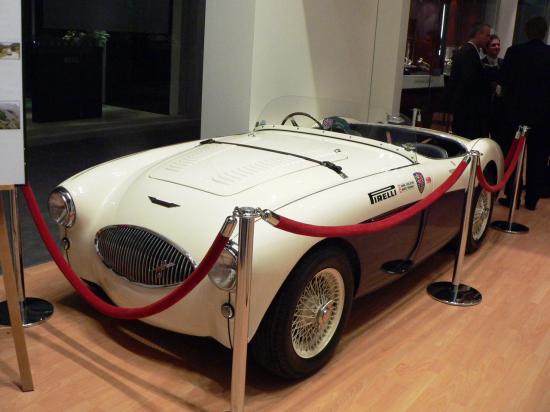Actually, there were 55 produced, 5 factory race cars and 50 customer cars, which I believe was the minimum production requirement by the FIA for production car racing at that time. They were never diesel. Mechanicals were developed from an Austin A90. They won their class at Sebring in 1954 which is why they were given the label "S" and raced at the 1955 Le Mans.

Austin-Healey 100S specs
| Car type | Open-wheeler |
| Curb weight | 890 kg (1962 lbs) |
| Dimensions | 3.76 m (148 in) long, 1.52 m (60 in) wide, 1.06 m (42 in) high |
| Wheelbase | 2.29 m (90 in) |
| Introduced | 1955 |
| Origin country | United Kingdom |
| Views | 3.6k |
| Submitted by | Super8 |
Powertrain specs
| Engine type | ARO L-27 D Diesel |
| Displacement | 2.7 l (162 ci / 2660 cc) |
| Power | 134 ps (132 bhp / 98 kw) @ 4700 rpm |
| Torque | 228 Nm (168 lb-ft) @ 2500 rpm |
| Power / liter | 50 ps (50 hp) |
| Power / weight | 150 ps (148 bhp) / t |
| Torque / weight | 256 Nm (189 lb-ft) / t |
| Transmission | 4 Speed Manual |
| Layout | front engine, rear wheel drive |
100S competition
More Austin-Healey cars 20
Racing results
| Race | # | Driver | Time | Gap |
|---|---|---|---|---|
| Mille Miglia | 37th | Tommy Wisdom | 13:04:10.0 | +9,383.0 |
Stumpjumper 12y ago
You're right that only 50 were made, and they ran at Le Mans in 1955 - in fact Lance MAcklin's Austin Healey was involved in the infamous Mercedes crash of that year - but where did you get the diesel engine idea from? I've never heard of that. The 3000 MkIII is the most luxurious, but the 100/4 (BN1) is nearly as fast, is the most raw and most fun, and it has a folding windscreen!




